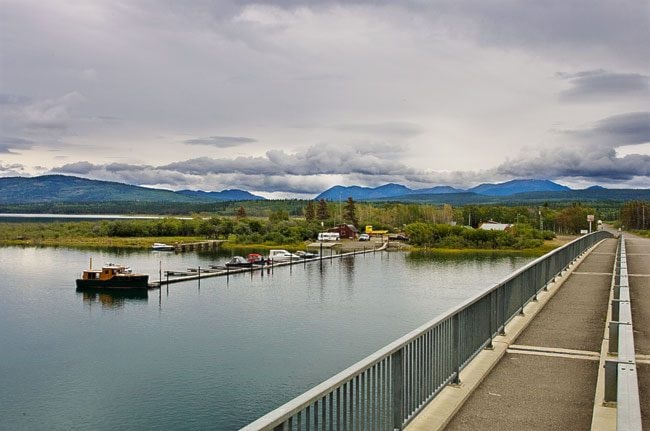Tagish does not exist, at least not officially.
The unincorporated community does not have official boundaries.
Without boundaries, the community’s local advisory council exists in legal limbo. The lack of boundaries also prevents a local land-use plan and zoning bylaws from being created.
And, without borders, it turns out that parts of the territory’s Dog Act, which prohibit dogs running at large, don’t apply.
Tagish residents have recently raised concerns about excessive dog noise, following the decision of the president of the Yukon Humane Society to shelter 29 dogs at her neighbourhood home.
Concerns about dogs are not new in the community, said council chair Paul Dabbs. Because no regulations address these concerns, the best option is to have individuals meet and work out a resolution together, he said.
But technically, the Tagish advisory council – which makes recommendations to the Department of Community Affairs – doesn’t exist.
There needs to be a cabinet order for the council to be legally recognized, and that hasn’t happened yet, said Christine Smith with community affairs.
The Tagish council is the only local advisory council without a signed order, she said. And a cabinet order won’t happen soon, as much needs to happen first, said Smith.
“It’s not even close to being there,” she added.
But the government acknowledges the council’s role, even without a defined boundary, said Smith. And the council still brings concerns to the government, said Dabbs.
The current council has spoken with the government about obtaining a cabinet order, he said. But little progress was made, he added.
Dabbs specifically thinks an order needs to be made so that land-use planning can get started.
“I think that it’s that first step in making some, what I would consider, some positive changes within the community. In other words, it’s the first step towards defining who we are, and then after that, maybe through a planning process, we start to look at, again, who we are and what we want to look like in the future.”
Without a plan, citizens have no certainty about what will happen on the land around them. “And that’s part of what a plan is designed to do,” said Dabbs.
Cabinet orders also ensure councils continue to operate.
“If at any time that local advisory council cannot get enough members, there’s no official piece of legislation, like an order in council, keeping it in existence,” said Smith. “It would then just go by the wayside.”
That happened a few years ago in the community of Deep Creek, near Lake Laberge, she said.
But it doesn’t look like this will happen in Tagish, she said.
Citizens can elect up to five members for the council. The Carcross/Tagish First Nation also appoints a member. Four Tagish residents, including Dabbs, have been acclaimed for the next council.
“This is a distinct improvement over last time,” he said.
Dabbs was the returning officer for the last election and had no intention of being a candidate, he said. But only one person ran for election. Three people, including himself, eventually stepped forward when they realized they didn’t have enough candidates to make a council. They were appointed by the minister.
The advisory council meets on the first Wednesday of every month. At the next meeting, the new council will be sworn in. Dabbs hopes there will be greater resolution to concerns about dog noise by then, he said.
Contact Meagan Gillmore at mgillmore@yukon-news.com
